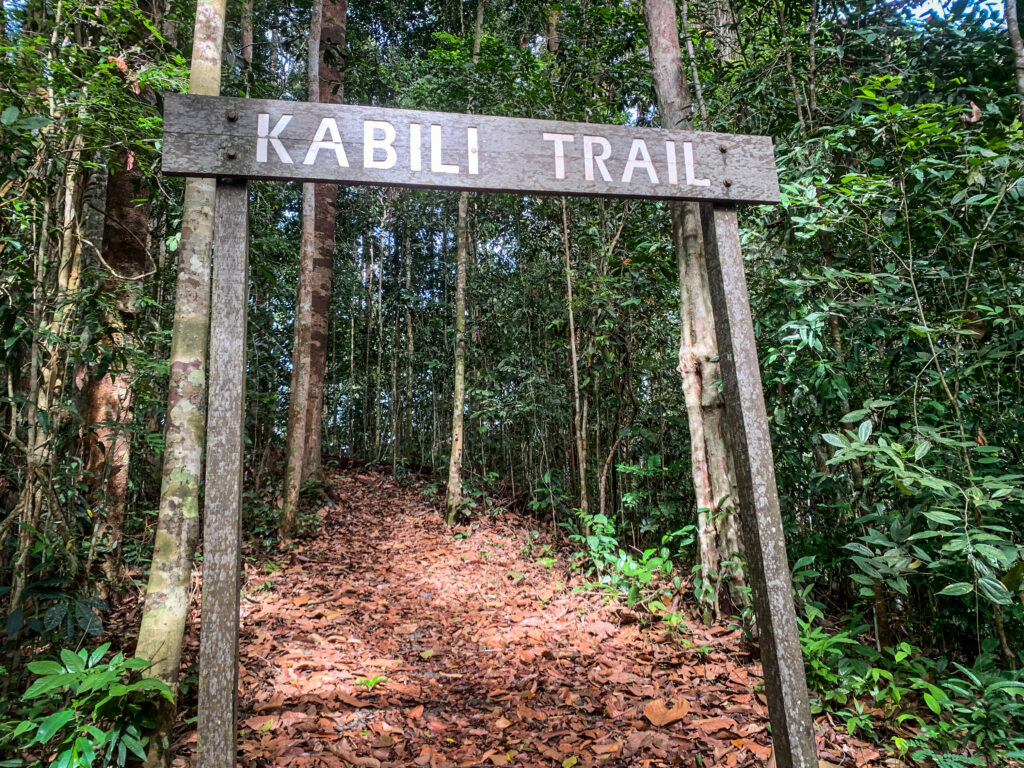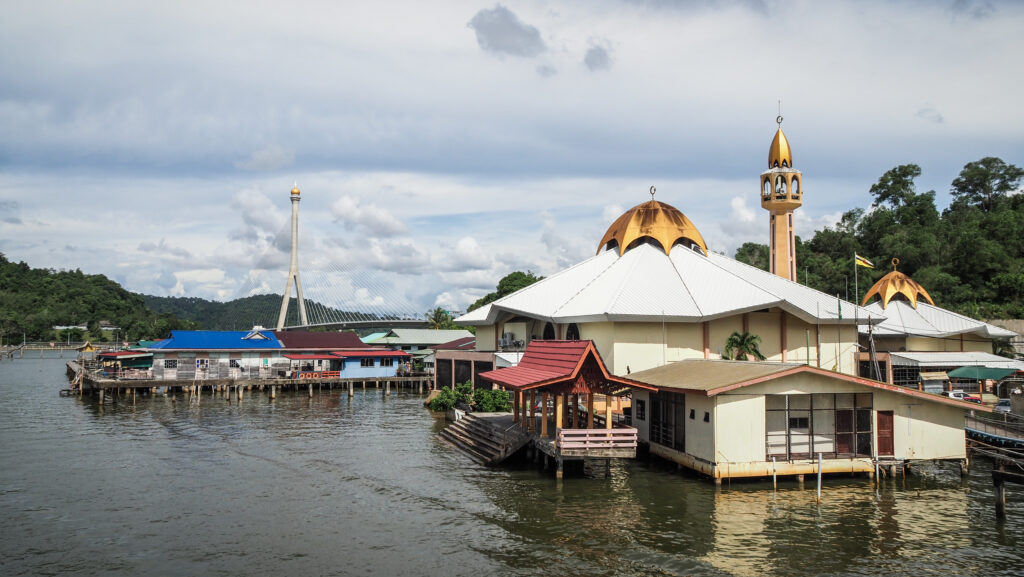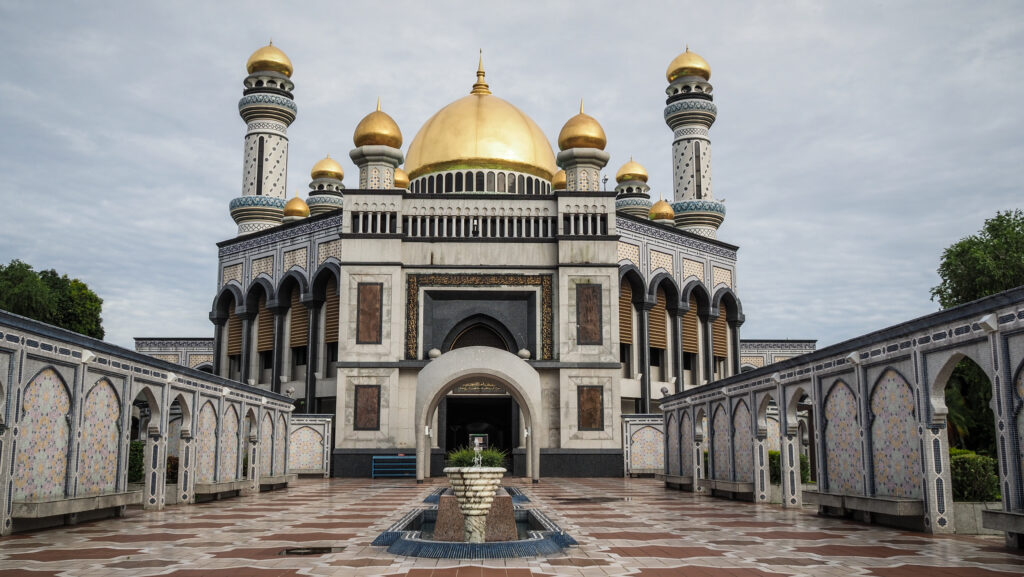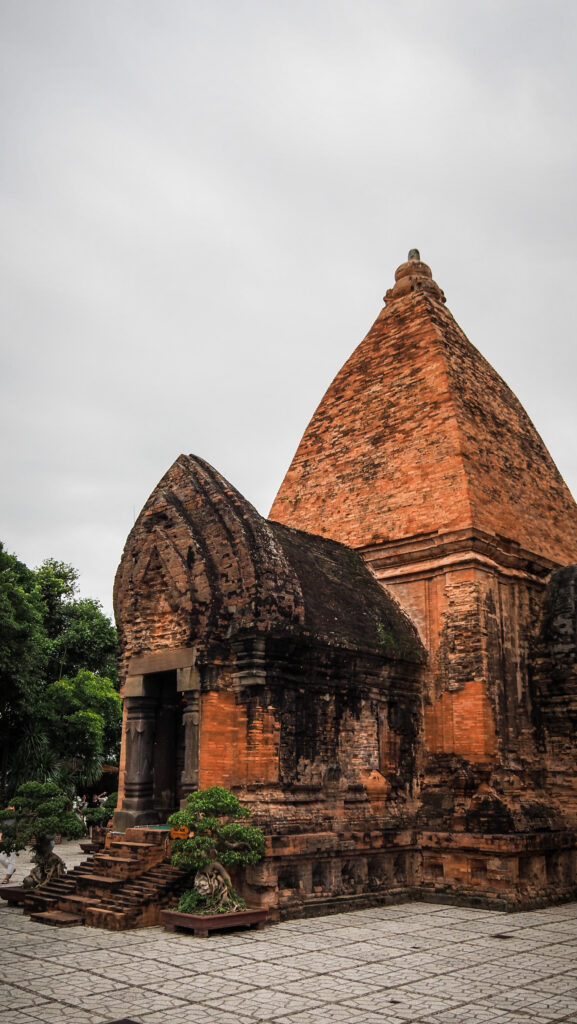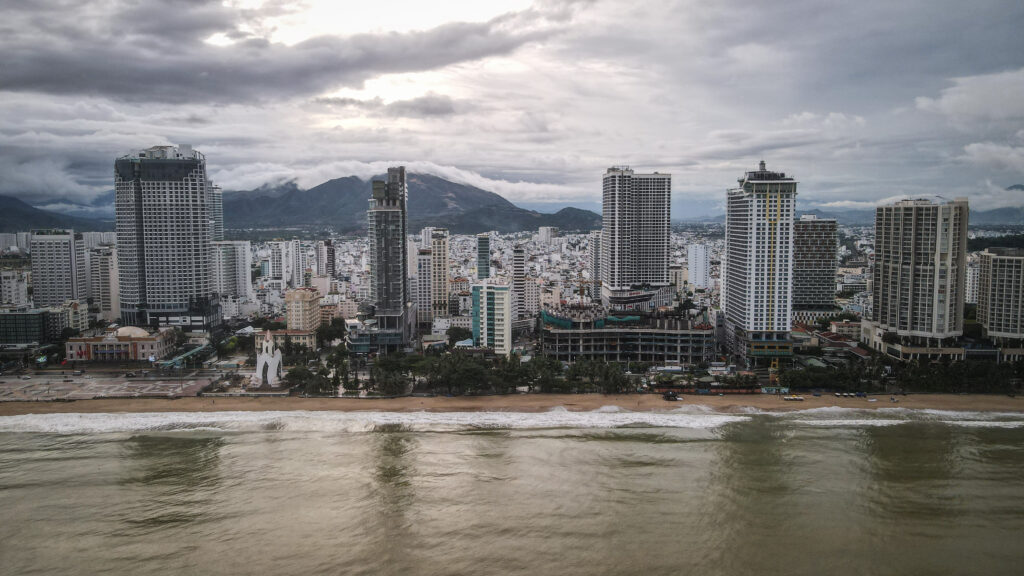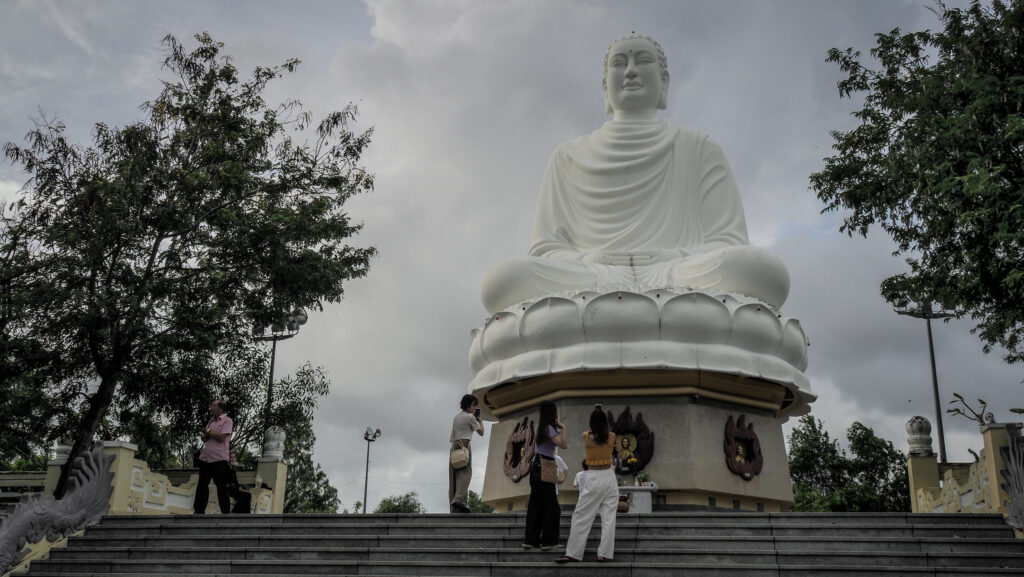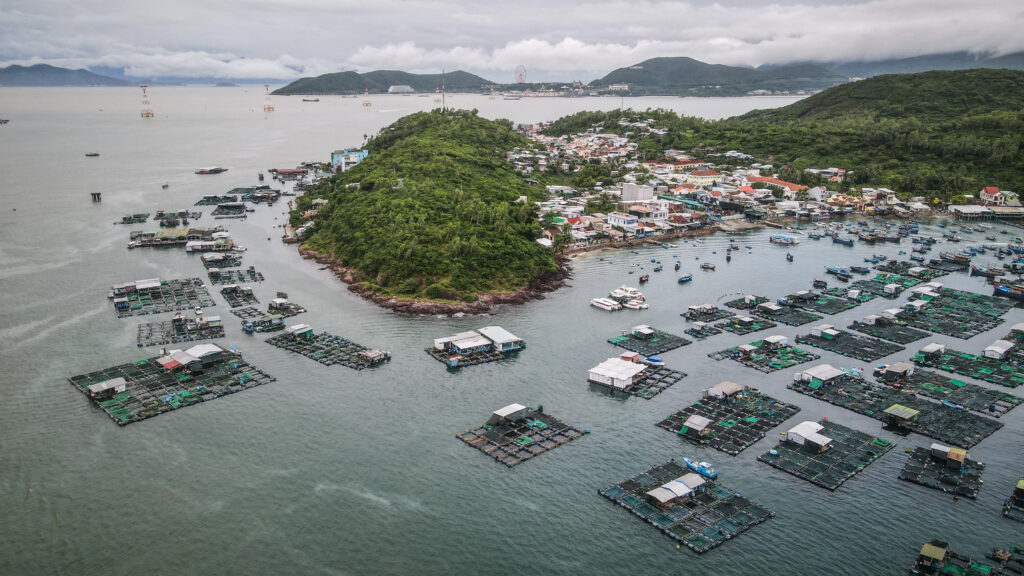Semporna is a district located on the east coast of Sabah, Malaysia. It is renowned for its stunning marine biodiversity and is a gateway to several of the world’s best diving sites, such as the famous Sipadan Island. The region attracts divers and tourists from around the globe due to its crystal-clear waters, diverse coral reefs, and rich marine life, including sea turtles, sharks, and various tropical fish species.
In addition to diving, Semporna offers activities such as island hopping, snorkelling, and exploring the local markets and seafood restaurants. The town of Semporna itself provides basic amenities and serves as a hub for tourists heading to nearby islands and marine parks.
Semporna is also culturally rich, with a significant population of the Bajau people, known as sea gipsies, who traditionally live a nomadic lifestyle on the sea. The Bajau Laut are known for their unique maritime skills and stilted houses built over water.
How to get to Semporna?
By Air
Several airlines operate flights to Tawau Airport (TAW), including Malaysia Airlines and AirAsia, with direct flights available from Kota Kinabalu (the capital of Sabah) and Kuala Lumpur (the capital of Malaysia). From Tawau, take a minibus going to Semporna. The drive takes about 1.5 – 2 hours.
By Land
There are bus services from Kota Kinabalu to Semporna but be prepared for a very long journey (most probably over 10 hours).
For ticket booking, visit Easybook or 12Go.Asia
By Ferry
Some ferries connect Tawau with Nunukan and Tarakan in Indonesian Borneo. The ferry services are less frequent, so checking the schedule in advance is important. From Tawau, take a minibus going to Semporna. The drive takes about 1.5 – 2 hours.

When to go?
The best time to visit the Semporna is during the dry season, which typically falls between March and October. The weather during these months is generally more favourable with less rainfall, making it easier to explore the islands (the sea is calm) and enjoy outdoor activities.
Where to stay?
I can recommend staying at Warisan Family Inn or Kuree Hut. Both are well-located, in the town centre with plenty of restaurants and shops. They can also help you to organize trips to the islands. Warisan Family Inn is closer to the waterfront if that matters. The rooms were clean and spacious!
How long should you stay?
Semporna doesn’t have much to offer but you can easily spend a few days visiting nearby islands, so it depends on your preferences. I spent one day in town and three days doing island hopping but some people prefer going just to one island and staying longer there, diving or just chilling at the beach.

What to do in Semporna?
Bukit Tengkorak Archaeological Site
Situated on a slope approximately 600 feet above sea level is this archaeological site. Bukit Tengkorak is a volcanic rock-shelter site and a part of a volcano mouth of 2km in diameter. The location housed Southeast Asia’s greatest ceramic production during the Neolithic era. In the small museum at the foot of the steps, one can learn more details about the discovery of this archaeological site. It’s free to visit.
You will have to climb quite a lot of wooden steps to get on top but it’s worth it. A beautiful panorama of the Semporna area can be admired from there. The best way to reach Bukit Tengkorak Archaeological Site is to use the mobile taxi application: Grab.


Museum Tun Sakaran
Exhibits about Tun Sakaran, who was Sabah Governor or Head of State, and his role as a community leader can be seen on the museum’s ground floor. On the first floor, there are displays on the history and culture of Semporna and the surrounding area. It’s free to visit.
1-day trips to the islands
The islands are the main Semporna’s appeal as a premier marine tourism destination, offering a range of activities from diving to serene beach vacation. Some people head there directly, without even stopping at the town itself.
Most of the islands can be visited on a one-day trip, which is a great option for those travelling on a budget. You can also arrange longer stays in the resorts but that will cost you significantly more.
Unfortunately, out of the three tours that I did, only one was organized 100% in line with what was advertised. Some operators insist on skipping certain locations once you are already on the sea, or they just pass by the island, without landing on it. Make sure your tour operator has plenty of good reviews!
Mabul and Kapalai Islands
I was picked up from the hotel in the morning and delivered by car to Pelancong Jetty. The rest of the group was already waiting so we set off to Mabul Island immediately. We passed by huge Bum Bum Island and soon got a glimpse of our first destination on the horizon. The rest of my group were here for diving, so the boat dropped me and one of the guides off at Mabul Island and then they left for their dive spot.
The fee to enter the resort area at Mabul Island is 50 RM per person, which is way too much in my opinion, as you only get access to boardwalks and photo spots. At least I found a nice place in the shade where I could fly a drone. There were lots of sea gipsies on the small boats selling coconuts.


We left the territory of the resort and went to the other side of the island, passing through the section where the staff working in the resort must live. The guide recommended another nice spot for flying a drone, in the middle of palm trees. It was quite nice indeed!
Soon we stepped into a normal village where the local population of the island lives and it was a much more interesting and authentic place to see than the resort filled with Chinese tourists. As we reached the pier, the rest of my group was already waiting there and we had lunch together.
After lunch, it was time for the first snorkelling session near Kapalai Island. It was nice and we could see plenty of fish and even some huge turtles, but unfortunately swimming around and freediving was hard as fins weren’t provided. We didn’t land on the island as essentially it’s just a sandbar with a resort built on stilts.


Then, we went back to Mabul Island for a second snorkelling session. That one was quite disappointing as the water wasn’t clear and instead of a natural reef, there were just some submerged artificial structures.
We arrived back at Semporna at about 4 PM. Overall, it was a nice trip. Compared to the ones described below, the food was the best, but the underwater world was the least memorable.
The trip cost 150 RM per person and it was arranged for me by the Kuree Hut where I was staying. Lunch, water and snorkelling equipment (without fins) were provided.
Mataking and Timba Timba Islands
I checked in at Semporna Jetty at 8:30 AM and was welcomed by the staff. Besides me, all the other tourists on the boat were divers. There were 3 snorkelling sessions: 2 at Mataking Island and 1 at Timba Timba Island. All the places were amazing and it was surely one of the best if not the best snorkelling that I experienced in Southeast Asia. The equipment was of superb quality and fins were included. I saw a lot of colorful fish but the highlight was huge green turtles coming up from the depths. Wow!


The trip cost 180 RM per person and I arranged it with Seabunny. The snorkelling equipment was in excellent condition (fins included) and the staff was really friendly. However, we weren’t able to set foot on any of the islands and the whole day was spent on the boat only. It was a big disappointment, considering how beautiful the sandbank at Timba Tima Island is. The staff explained that it’s because both islands are private properties, however, I found info online that it’s possible to visit, but you simply need to pay extra. It would be nice to be offered a choice!
Boheydulang, Sibuan and Mantabuan Islands
I was picked up from the hotel in the morning and delivered by car to Pelancong Jetty. The first stop of the day was at Boheydulang Island, where we did a sweaty 20-30-minute hike up to the viewpoint. Every few meters there is a ‘guide’ monitoring if everyone is fine, as the place is very popular. The view was really worth the effort, even though I ended up completely soaked in sweat. Don’t forget water!

From there, we were supposed to go to Mantabuan Island but the boat crew was doing everything to discourage us from that. Unfortunately, they wanted to skip it and come back earlier to Semporna which was absolutely not fair. Luckily, most of the participants protested so we ended up going there. We didn’t land on the island but the offshore snorkelling was superb with plenty of starfish around!

Next, we stopped at Sibuan Island where we had our lunch and some free time to walk around the sandbank. Unfortunately drone flying wasn’t possible as all the islands are part of Tun Sakaran Marine Park plus there is a Military Zone.

Soon it was time for another snorkeling session and we boarded the boat only to be dropped off… at another side of Sibuan Island, a few meters from the beach. Hillarious! Basically we could have just walked there… Snorkeling there was really mediocre and it was a pretty clear sign that the boat crew wanted to finish the tour as soon as possible.
Overall, we all came back to Semporna with mixed feelings. The beauty of the islands is unquestionable, however, the behaviour of the tour operator was really bad and disrespectful. The trip cost 250 RM per person and it was arranged for me by the Kuree Hut where I was staying. Lunch, water and snorkelling equipment (without fins) were provided.

Sipadan Island
The 600-meter vertical drop around the island is covered in coral with much variety and quantity of marine life. A typical day at Sipadan includes seeing numerous enormous green and hawksbill turtles, herds of hundreds of enormous bump head parrot fish, schools of thousands of jackfish, and enormous schools of barracuda.
There are limited permits shared by tour operators each day and larger resorts get more permits. Each permit allows a diver to dive for a day at Sipadan Island. Try to book your trip and permit as early as possible, especially during peak season, to avoid disappointment.
Bum Bum Island
It is situated about one kilometre east of Semporna town and is separated from the mainland by a Tando Bulong Channel. There are several floating, homestay-style options for accommodation and snorkelling and diving are offered. To get there, you can easily find a boat at the public jetty in Semporna.









































